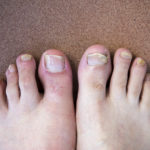
Wondering how to design a product that really sells?
In today’s business world, there are few things more impressive – and desirable – than becoming an entrepreneur. There are 27 million entrepreneurs in the U.S. alone. If you want to become one of them, you’ll need to know how to design a product that people really want to invest in.
Even digital things, like apps and websites, are products. No matter what niche you plan to focus on, selling a product requires knowing certain design tactics that will get the results you want. Ready to put your product on the market? Keep reading for the design strategies that will make it stand out from the competition.
Step One: Understand Audience
Product design isn’t just about coming up with something cool or something that looks good. Good design really hinges on understanding consumer pain points and making a product that will alleviate those pains. This ensures that you’ll have a product that is truly useful.
A great deal of the success of your product hinges on devising the correct solution to the correct problem. If you want your product to be useful (read: marketable), you’ll need to know the people you’re selling to. Determine who your target audience is, and research them before you start designing.
This process takes time, but it gets results. If you think you have a good idea for a product, your research will confirm whether or not you’re right. Interviews are a great way to gather information at this step, but you can also use fieldwork, online research, or other methods.
Step Two: Share Results
If you were working with a team in Step One, it’s time to get together and share your findings. Even if you’re working alone, this is a good time to summarize what you found to figure out what your next steps should be.
The larger your organization is, the more important this step will be. For example, if you’re working with an existing company to design a new product, you’ll need to get things organized with the stakeholders and make sure everyone involved is on the same page.
As a designer working within an organization or a team, you’re tasked with being a good communicator as well as a good designer. You need to connect the disparate elements involved and convince them to move forward with your concept.
You can use proven tactics to help get your team (or potential investors) excited about your product. Developing personas of your target audience helps them see exactly who is going to buy your product, and why. Leading them through the customer journey helps them visualize how their investment is going to pay off.
Use visuals to your advantage – make a poster of each persona to display on the wall, or an interactive slideshow about the customer journey. These tools aren’t just useful for sharing with your team. As you create them, you’ll likely learn more about how you should focus the design of your product to appeal to your customers.
Step Three: Brainstorm Solutions
Once everyone involved in the project has seen the presentation of your findings, it’s time to brainstorm.
Wondering how this looks if you’re working alone? The truth is that by this stage of the game, the chances that you’ll be working alone are slim. No matter how you plan to bring your product to fruition, you’ll need to get a team on board at some point. Whether you’re working with a single partner, a group of investors, or a full-scale existing business, you’ll have people who you need to brainstorm with.
The more people you can involve in the brainstorming process, the more ideas you’ll get. If you don’t have a full team at your disposal, you might talk to trusted friends and family members about your product plans and findings.
Now is the time to pinpoint exactly how your product will look and feel, and what features it will have. You might not even know what kind of product you’ll make at all until you reach this step. Until you understand your target audience, you can’t truly know what you’ll be able to sell to them.
No matter where you are in the process, make sure your product has features that solve problems for your customers. Brainstorm as many ideas for useful features as possible.
Once you have a good list of ideas, you can narrow them down using resources like validation tests. Next, you’ll need to create a plan for how you’ll put those winning features on the market. The features should drive your product design, and not the other way around.
Step Four: Create Prototype
Now that you know what features you want in your product, you can design products with those features. Again, come up with as many ideas as possible that include your features.
You can start with simple sketches drawn by hand. The goal of prototyping is to design something fast that you can test out with your target audience. User tests will tell you whether or not people understand the product, and if anything needs to be changed.
There are many different ways to design a prototype, depending on the product you have. Physical products can often be built using things you have around the house, or 3D printed if you have access to the equipment. A prototype for an app will involve creating something clickable and interactive that users can test out like the real thing.
Only after you’ve prototyped is it time to think about things like package design. Luckily, companies like SmashBrand can help you nail this step.
How to Design a Product: What Happens Next?
Once you’ve created and tested your prototype, you can refine it until the product is ready to go to market. However, the work of how to design a product never truly stops. You should continue to research your audience’s pain points and find new ways for your product to meet their needs.
Great design sets your product apart from the competition. Looking for more tips to help your brand thrive? Check out this guide to boosting your business productivity with computer accessories.

